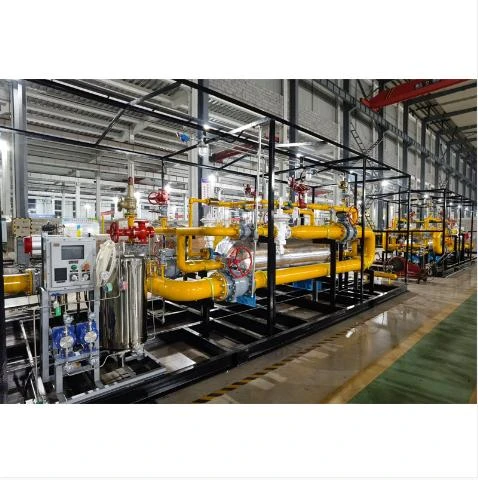
Nov . 11, 2024 00:26
Back to list
Natural Gas Pressure Control Valve for Efficient Energy Regulation and Safety Compliance
Understanding Natural Gas Pressure Reducing Valves
Natural gas is a crucial energy source that powers homes, industries, and businesses across the globe. However, because it is delivered at high pressures through pipelines, it must be regulated to ensure safe and efficient use. One essential component of this regulation system is the pressure reducing valve (PRV). This article will explore the function and importance of natural gas pressure reducing valves, their types, and best practices for maintenance and selection.
What is a Pressure Reducing Valve?
A natural gas pressure reducing valve is a device that automatically reduces the inlet pressure of gas to a lower, safer outlet pressure, suitable for end-user applications. This is essential because the pressure needs to be controlled to prevent damage to appliances, ensure safety, and optimize performance. High pressure can lead to leaks, explosions, or equipment failure, so the pressure reducing valve becomes integral to any natural gas system.
How Do Pressure Reducing Valves Work?
The primary function of a PRV is to maintain a consistent outlet pressure despite fluctuations in the inlet pressure or demand. The valve incorporates a diaphragm mechanism; as the inlet gas pressure rises, it pushes against the diaphragm, which, in turn, adjusts the valve opening to decrease the outlet pressure. Conversely, if the inlet pressure drops, the diaphragm relaxes, allowing more gas to pass, thus stabilizing the outlet pressure. This feedback loop is vital for maintaining operational efficiency and safety in natural gas distribution systems.
Types of Pressure Reducing Valves
There are several types of natural gas pressure reducing valves, each designed for specific applications
1. Single-Stage Pressure Regulators These are the most common type used in residential applications. They reduce high-pressure gas to a lower pressure suitable for home appliances.
2. Two-Stage Pressure Regulators Typically used in industrial applications, these regulators first drop the pressure down to an intermediate level before further reducing it to the desired final pressure. This provides greater accuracy and stability.
3. Vent Limiters These are designed to prevent excessive venting of gas during regulation. This is essential for safety and efficiency, as it minimizes gas waste and potential environmental hazards.
4. Back Pressure Regulators These maintain a set pressure upstream and can be critical in applications where maintaining a specific gas pressure is essential for system integrity.
natural gas pressure reducing valve

Importance of Maintenance
Regular maintenance of pressure reducing valves is crucial for optimal performance and safety. Over time, wear and tear can affect the diaphragm, springs, and other critical components, leading to potential failures. A scheduled maintenance program should include
- Visual Inspection Regularly check for leaks, corrosion, or any physical damage to the valve and associated piping. - Testing Periodically test the outlet pressure to ensure it’s within the desired range. - Cleaning Dirt and debris can hinder valve performance, so keeping the system clean is essential.
- Replacement Components may wear out and need replacement. Keeping spare parts handy can minimize downtime.
Selecting the Right Pressure Reducing Valve
When selecting a pressure reducing valve for natural gas applications, it is vital to consider several factors
- Flow Rate The valve must be capable of handling the peak flow rate required by the application.
- Inlet and Outlet Pressure Understand the specific pressure requirements and ensure the regulator can operate within those parameters.
- Material Compatibility Depending on the environment where the valve will be placed, material compatibility with natural gas and the surrounding conditions must be considered.
- Certification and Standards Choose valves that meet national and local safety regulations and standards to ensure compliance and safety.
Conclusion
Natural gas pressure reducing valves play a vital role in the safety and efficiency of gas distribution systems. Understanding their function, types, and maintenance can help in choosing the right valve for specific applications. By ensuring that these valves are properly maintained and selected, users can enhance the performance of their natural gas systems while minimizing risks associated with high-pressure gas usage.
Latest news
-
Safety Valve Spring-Loaded Design Overpressure ProtectionNewsJul.25,2025
-
Precision Voltage Regulator AC5 Accuracy Grade PerformanceNewsJul.25,2025
-
Natural Gas Pressure Regulating Skid Industrial Pipeline ApplicationsNewsJul.25,2025
-
Natural Gas Filter Stainless Steel Mesh Element DesignNewsJul.25,2025
-
Gas Pressure Regulator Valve Direct-Acting Spring-Loaded DesignNewsJul.25,2025
-
Decompression Equipment Multi-Stage Heat Exchange System DesignNewsJul.25,2025

